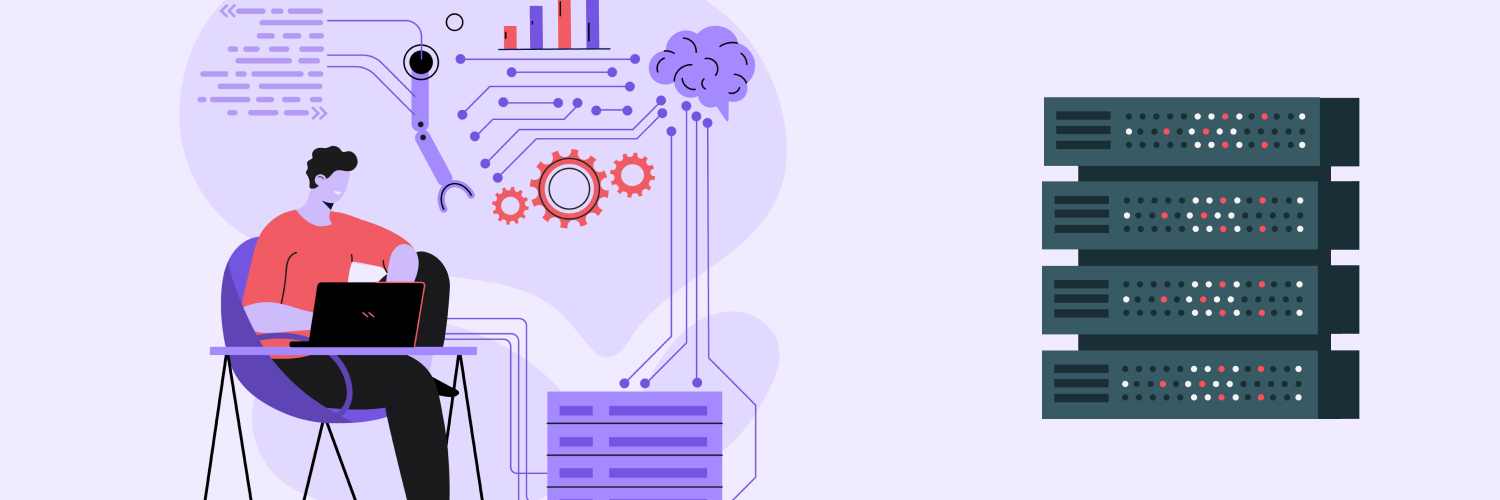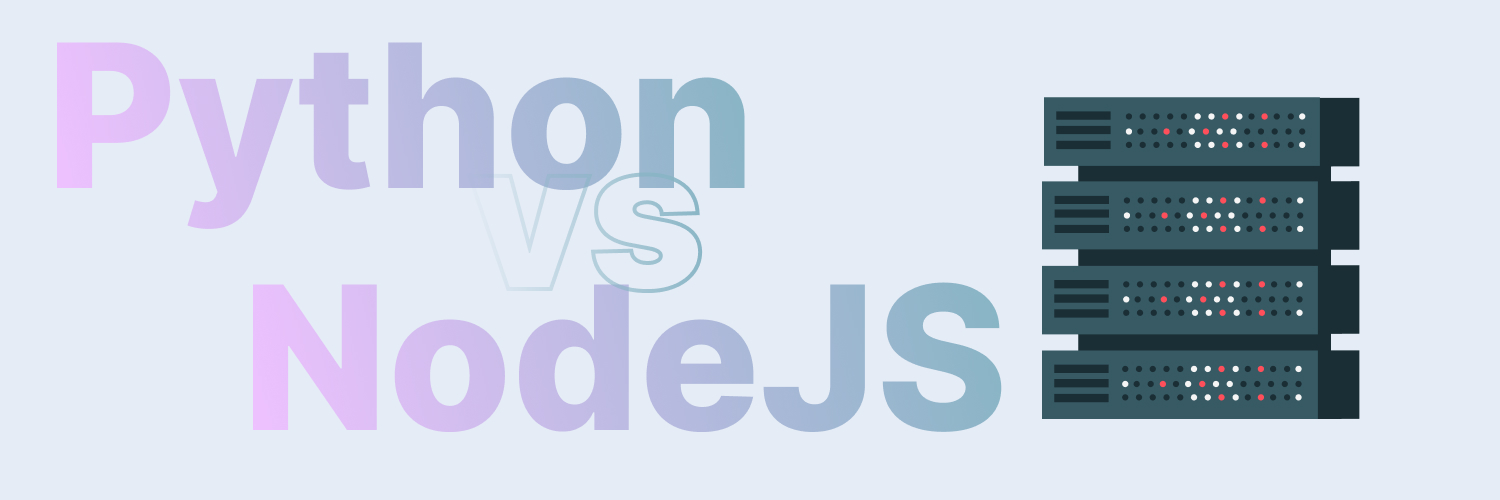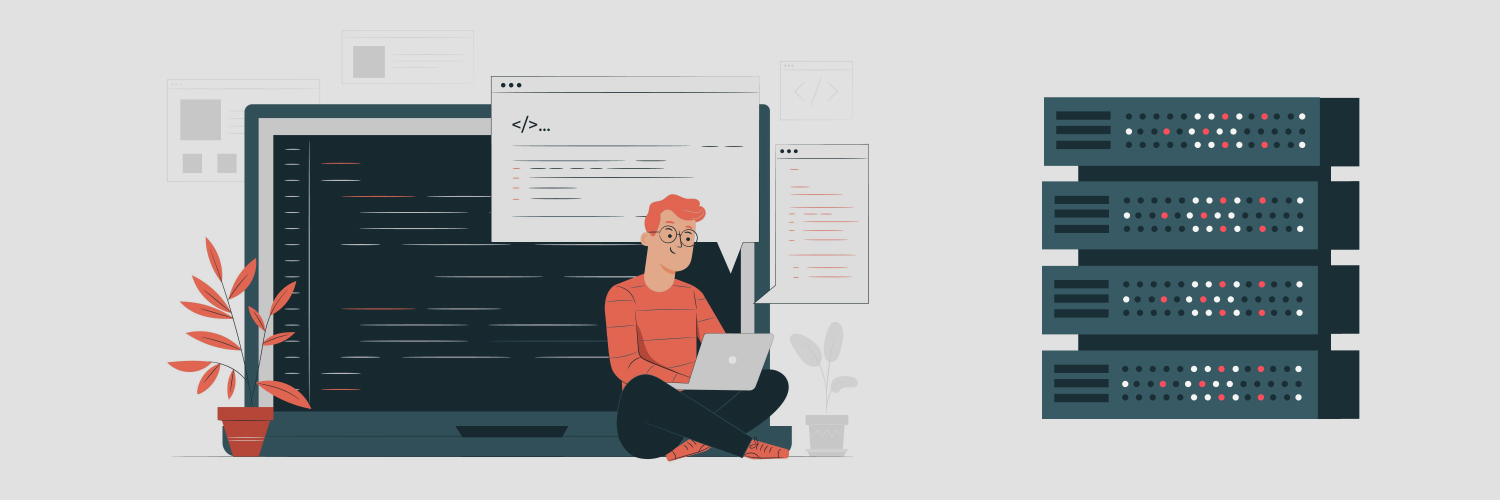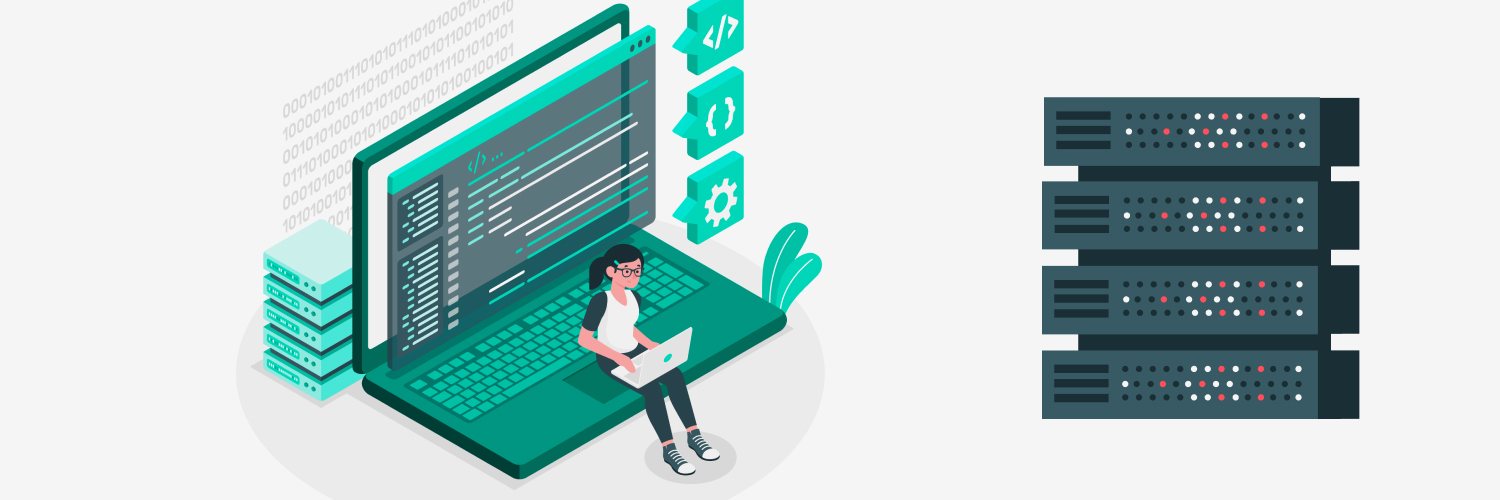Exploring A Google Proxy (And How To Use Google Proxies)
There are nearly 5.5 billion searches on Google Search each day. This search engine has billions of internet sites and pages perfectly indexed. One of the best parts is, Google has its own web crawler — the Googlebot — which simulates a user on a desktop or a mobile device.
Thanks to this tool, users can interact with the data it collects whenever they want — without having to visit each site individually. But while the Googlebot has front row seats to public data on pretty much every website under the sun, using this tool manually is not always the most practical option.
This Application Programming Interface (API) has numerous drawbacks, including:
- It’s made for searching within a small group of websites or just one at a time.
- It provides more limited data than a Google scraper.
- It costs money to use ($5 per 1,000 requests).
Why Build Your Own Google Web Scraper

Going through search results and copy-pasting the most relevant pieces of information one at a time is a time-consuming process that will keep you from doing more important organizational tasks. Although this data will ultimately lead you to make better decisions to enhance your business operations, there are more effective options when it comes to Google scraping practices.
Building your own Google scraping tool will save you both time and money. It will also allow for more thorough customization of your scraping process, making it easier for you to gather the information you’re interested in. If you’re looking to gather data through the largest search engine out there, here’s the ultimate guide to Google proxy scraping.
Step-by-Step Instructions for Building a Google Scraper

Why learn how to use a Google web scraper when you can create your own using your preferred programming language? There are many ways to build a basic scraper to extract the information that interests you from Google Search and its verticals quickly and easily.
Programming your own Google Scraper in your preferred language will let you collect all the data you need for your research and download the HTML code to parse the page title, description, and URL so that you can conveniently save everything in JSON or your favorite output format.
While you can use whichever language you’re most familiar with, here are the main steps to creating a simple Google scraper in Python:
1. Import the necessary modules
Before you even start programming, make sure you gather all the necessary tools and modules for your scraper to run smoothly. You’ll probably want to install a scraping and web crawling framework like Scrapy, which will make your data mining and information processing endeavors much easier.
Keep in mind that you’ll need to have an output format handy so that you can visualize your freshly scraped data. JSON, for example, is an excellent alternative that has a minimal number or value types. Although initially a subset to JavaScript, JSON is supported by all common coding languages and numerous databases. Importing this generic data format will let you sort out your data in plain text files you can easily open and examine.
Using Urlencode will help you bypass any encoding issues caused by symbols in the Google URL, thus avoiding any potential unpredictabilities. Additionally, you’ll need to import and install a Python library to make HTTP requests. Finally, you must use a parser like LXML to process XML and HTML in the Python language.
2. Create a function
Once you’ve imported these elements, it’s time to create a function for your query. You’ll need to select the domain from which you want to extract data and create a payload with your query’s information. Because the parameters within your search might include symbols like the + sign, using urlencode will prevent the function from breaking.
3. Parse your data
When you’re done with function creation, you can download the Google Search page and parse the freshly scraped data by creating an XML tree from the HTML. If you’re using Chrome, you just need to right-click anywhere on the page you’re scraping and click on “Inspect” in the menu. Move up the tree until you can locate the element that covers the whole box for one specific search result. Google dynamically generates names, so your results might differ every time.
4. Refine your data
Next, you’ll need to remove all elements that are hidden from regular users. Since you’re trying to gather data on what users see and the activities they perform during their Google searches, you won’t need this information. Also, get rid of classes that contain data that are not organic search results.
5. Export your data
Go through each and every relevant result and pull out the data you need. Use XPath to specify this information. Once you’re done, you can write the data you just scraped and parse it into a .JSON file. Repeat the process with every other search you want to scrape.
Include High-level Features (Optional)

If you’re a more experienced Google scraper, you can always add advanced features to your spider, including:
A User Agent
This feature will help you avoid unwanted blocks. It will show the website you’re using to connect and make you look less like a scraper. To add one, you just need to code your crawler a little differently. You can also import an extra module called “random” to help you randomize your agents for an extra layer of protection.
Pagination
Each Google Search result page has a different URL. Extracting data from them one by one is a time-consuming process. If you want to scrape more than just one Google Search result page at a time — which is probably why you’re building a scraper in the first place — you’ll need to add pagination through a parameter called “pages.”
Proxies
If you’re using a rotating proxy network — which you should definitely be doing when web scraping to minimize banning risks — adding a proxy feature to your spider will come in handy. You can nest it inside your pagination loop to make it look like each of your requests is coming from a different IP address.
Using a Search Engine Results Page API

If you’re not coding savvy, a SERP API can be a lifesaver. It will handle pretty much all the scraping, so you don’t have to build a spider by yourself from scratch. All you have to do is input some parameters and keywords for it to start extracting the information you need. In no time, you’ll be able to visualize targeted keywords, page titles, links, and more.
Once your SERP API is done scraping, you can easily save the resulting data in a database — it’s as simple as that.
Types of Google Sites

Google is the ultimate internet giant — it has evolved into a vertical search engine that offers different sites for diverse search purposes. Within Google Search, you can find lots of alternatives that allow you to further specify your inquiries. Enter “Specialized Search.”
Scraping Google’s specialized search engines can provide you with numerous insights that can better help you in your data analysis. Some of them will give you specific information about your customers and competitors, while others are better if you’re performing niche Google proxy scraping to launch a new product or service.
A few of the most popular Google verticals are:
Google Places
This site allows physical (brick-and-mortar) stores to let potential customers know about them.
Google Places provides you with your competitors:
- Images
- Reviews
- Location
- Other valuable information you can use in your favor
Google Scholar
This specialized search engine is great for scholarly research. It gives you access to numerous publications and simplifies the way students and academics find verified sources to back up their work. This vertical ranks pages by sources and the number of times a publication has been cited.
Google Patent Search
This vertical allows you to search patents all around the world through topic keywords, names, and other identifiers. You can search for all kinds of patents — including concepts and drawings. This is useful information to scrape if you’re developing a new product.
Google Shopping
Previously known as Google Product Search, this vertical lets you search through shopping trends and throws out specific items you can filter by price range, vendor, availability, and more. Results will show local and online stores where you can purchase an item based on inventory.
Google Finance
This dedicated search engine displays stock quotes and financial news. It allows you to look for specific companies and view investing trends to keep track of your personal portfolio.
Google News
This content portal that resembles a digital newspaper provides information from a diverse range of media sources. It lets you customize the front page to display specific news items and set up Google alerts to be notified on topics that interest you.
Google Trends
Another great source of data to scrape, this dedicated search engine measures the popularity of the terms searched in a determined period. You can use it to analyze fluctuations and compare specific keywords.
Google Flights
This search engine compares flights between airlines and filters results by:
- Flight duration
- Price
- Airline
- Number and duration of stops
- Departure and arrival times
Google Videos
This video search engine allows you to find results among multiple streaming video services — even across social media. It was thought of as a streaming service at first, but now it’s a useful tool to look for videos across the web and have them all in the same place.
Google Images
One of the most popular Google verticals, Google Images allows you to find pictures, vectors, gifs, and more. It uses the context of an image to determine whether it’s relevant for your specific search. It also allows you to perform a reverse search and filter results based on size, color, orientation, date, and even credentials.
You can use a Google Images proxy to scrape these results and extract valuable information.
Considerations When Scraping Different Types of Google Sites

The biggest mistake you can make when scraping Google — and any other site — is not using a good proxy. However, that’s not the only misstep you can take. Some common errors that even experienced web scrapers make all the time are:
Using free proxies
There are much better alternatives available if you want to protect your identity and your data. Do your research and avoid using just any free or public proxy you find online, especially if they use shared IPs. These options don’t provide enough security to your network as their connections are often open to anyone, including bad actors or hackers.
You might think you’re being smart by using a free proxy, but there’s too much at stake. They are much more likely to be blocked by the sites you’re looking to scrape. Additionally, if you happen to stumble upon a malicious actor online while using a free proxy, they can spy on your connection, steal your information, and infect your network with malware.
Free and shared proxies are also much slower than their counterparts because they have a lot more people trying to use them at the same time. If you’re scraping Google, you should always use a trusted proxy supplier that can provide you with reliable rotating residential IPs.
Running into a honeypot trap
Lots of sites use honeypot traps as a security tool that helps them detect and stop any attempt of unauthorized data collection. Remember, Google and other platforms won’t stop and analyze case by case who’s trying to conduct harmless research and who’s trying to attack them or steal information for nefarious purposes. That’s why they set up anti-scraping measures like these traps to stop any potential aggressor in their tracks.
Honeypot traps, in most cases, are camouflaged and undetectable to the naked eye. Spiders and web crawlers, however, can encounter them at the coding level. To avoid them, make sure to assess the site for invisible links and program your crawler to work around them. Scan the CSS code for anything that says “display: none.”
Following repetitive crawling patterns
Your bot will typically follow the same scraping patterns unless you program it to do otherwise. This means it will send requests in uniform intervals and overall act like a bot because that’s what it is.
This repetitiveness is very easy to detect, simply because humans are a tad more unpredictable. Google has advanced anti-crawling mechanisms that will identify your scraping tool in a heartbeat. Make a few random clicks here and there to throw off the site’s anti-bot settings.
Forgetting to use a headless browser
Some sites closely monitor JavaScript execution, browser cookies, extensions, and web fonts to detect even the most subtle evidence that your scraper is not a real user. That’s why sometimes, you’ll need to use a browser that doesn’t display the visual layout of the site.
Headless browsers are an excellent tool to scrape richer content. Since they don’t have to deal with the overhead of opening UIs, they allow for faster scraping of the websites. What’s more, they can help automate the scrapping mechanism and optimize data extraction.
Some headless browsers will even allow you to write code to mimic what a real person would do to help you avoid detection. Not using them leaves you susceptible to bans simply because you’re easier to detect.
Not following Google’s rules
When using a Google proxy, you’re able to make numerous requests at once or in a short period of time. It’s easy to become greedy, which may lead you to overwhelm the site’s server. Avoid that by limiting the number of requests you make. This will ensure you cause no harm to your target website’s server.
Best Proxies for Google Scraping

When doing enterprise-level web scraping — especially on sites like Google — you need to use a private proxy. Public proxies might offer similar IP mask options, but they cannot protect your identity and the results of your research as well as private proxies. If you don’t have a private connection, you’re putting your business at risk and are vulnerable to having valuable data stolen.
Not only is using a public proxy dangerous, but it also increases your chances of having slower response times and increased website downtimes. Depending on the type of research you’re trying to do, the most recommended option would be getting a rotating residential proxy.
Residential proxies are arguably the most secure form of proxies available, especially when trying to avoid being blocked or banned. They’re IPs generated by an internet service provider and assigned to physical devices at residences — rather than a data center — which makes them appear like genuine connections that are hard to track and block by sites.
IP rotation adds an extra security step to keep your scraping activity unnoticed for longer. Having a bunch of different masks that get replaced regularly will make it harder for Google proxy sites to detect you, thus preventing you from getting blocklisted. Rotating residential proxies will choose a different IP every time you send out a request to cover up any suspicious behavior.
Getting Around Google CAPTCHAs

The worst thing that could happen while attempting to collect that precious data you need for your next winning business idea is to get an IP ban or be blocklisted. Getting stuck with annoying CAPTCHAs (Completely Automated Public Turing test to tell Computers and Humans Apart) also feels like a special place in hell for web scrapers. These protections are used by Google to stop bots in their tracks and make sure all queries are made by humans.
Google scrapes the web all the time. As we mentioned above, they even have their own web scraper to make the data they gather available to the hungry eyes of the public. However, the search engine doesn’t like it when users take advantage of bots to streamline the scraping process. That’s why even when your scraping methods are ethical and legitimate, the search engine will try to hijack them with IP bans and CAPTCHAs.
To be fair, there are thousands of attackers and malicious actors out there trying to harm Google and other sites. However, Google won’t stop to test you and determine if you’re one of the bad guys or if you’re indeed a good guy. They’ll simply block all suspicious activities in an attempt to safeguard websites and their privacy.
Google has two levels of security in place. It won’t immediately ban your Google proxies. Instead, it will give you a chance to prove you’re a flesh and blood human by presenting a Google Search CAPTCHA, which is a system to identify bots. If you fail or keep looking suspicious to them, they’ll pull out the big guns: they’ll ban you. This measure can be permanent if your infraction is severe.
But how can you stop this from happening? No method is bulletproof — after all, web scraping is still heavily frowned upon by Google. However, the following methods might cut you some slack and allow you to perform your web scraping activities with a lower risk of getting caught.
1. Limit your individual proxy IP use
As mentioned above, most businesses know better than to use a single proxy for web scraping. You’ll need a large batch of IPs that constantly rotate so that your requests won’t look like they’re all coming from the same place. A good piece of advice is to have your rotating residential IPs ready to use within your scraper. If you’re using an API, it will most likely give you an option to indicate how often a specific proxy can query or search.
You can set up the query frequency in minutes or seconds, depending on how cautious you want to be. A good rule of thumb is to set each individual proxy to be used every two to five seconds. This will ensure Google doesn’t start suspecting it’s a bot and not a human that’s making the queries. From its point of view, having the same IP doing a different search every second is like you just did 600 searches in 10 minutes. That’s not likely to happen, is it?
The more IPs you have available, the more you can space out the number of times you use each of them.
2. Set a proxy rate limit
This is a natural follow-up to the previous suggestion. Not only do you want to limit the number of times you use each individual proxy IP, but you also want to be careful with how often all of your IPs can query for a specific topic.
To make Google even less suspicious of you, set up your proxies to have diverse rate limits. If you make 6,000 queries about SEO popular keywords, for example, having all of them come at once will trigger Google’s self-defense mechanisms — even if all queries come from different IPs. It’d be an odd coincidence if 6,000 people made the exact same query at the exact same time. As a result, Google will surprise you with an IP ban or a CAPTCHA.
3. Set up your own IP’s location
The search engine tends to decide for you where your IP is located. Most proxy IPs are located in very specific countries to access restricted content. Yet Google sometimes places your IP elsewhere, missing the whole point of using an IP. What you can do about this issue is ditch the classic google.com and visit the no country redirect (NCR) instead. This will automatically redirect you to the US Google site — even when your IP is in a different country.
By submitting your requests from a single country, you’ll be avoiding potential red flags. It’s a lot less common to have the same query come from several different locations rather than a specific geographical area. However, this measure will not work for you if the whole purpose of your research is to find results in other countries. In this case, you’ll need to go the other route and look for a proxy provider that has multiple worldwide locations to pick from.
4. Set a referrer URL
To scrape a site like Google, you must access very specific parts of the search engine. For example, most general queries are done in Google Search, which is the general search engine. This is the better-positioned site in the Google umbrella and hence, the most likely to get queries.
Regardless of the browser they’re using, most people have Google Search set as their default search engine. All they have to do is type their inquiry into the URL bar, and it will automatically go to Google Search. This is especially true for Chrome users.
To make your bot look more human to Google and avoid CAPTCHAs and IP bans, don’t leave it to make decisions by itself. When left to their own devices, scraping tools start using keywords to collect data without even visiting google.com. By circumventing the organic search path, they end up raising red flags that cause Google to take action. Always set your referrer to google.com. You can either include this as a function in your code or, to avoid the hassle, use an API that gives you this option.
5. Craft unique user agents
A user agent is a term used for identifying your computer settings based on information collected from your browser — like screen resolution, browser brand and version, operating system, etc. This is not sensitive information like your credit card information, passwords, or anything that could jeopardize your online integrity.
When scraping Google, it’s strictly necessary to diversify your user agent information. This is because Google traces it back to the same source, and much like it happens with your IP address, it will make it seem like the same person made thousands of requests all at once. This is not something a human would do and is often associated with DoS attacks that try to overwhelm a server to prevent it from working properly.
You can change your user agent information by installing extensions that allow you to do so. This will give you a better chance at getting around the Google triggers. However, if you’re using hundreds of proxies at once, you might be better off using an API that handles user agents for you. This way, all you’ll have to worry about is retrieving the data you need without stressing about much else.
6. Be wary of the Google search operators you’re using
While scraping data, lots of people resort to search operators that when used properly, can result in a large amount of incredibly relevant data. However, these tools for conducting hyper-specific queries on Google might become suspicious to the search engine.
The most popular search operators available are intext, intitle, and inurl. You can also find terms like allinurl, for example. These words give Google directions on how to classify content types. The search engine can then produce better and more specific results your bots can sort through.
Most search operators, however, have tons of rules and are used in numerous ways. Yet Google truly dislikes them. These tools are vastly common in bot searches and somewhat easy to identify. After all, a regular flesh-and-bone human is less likely to type in “allinurl: chihuahua dogs” to find information about their favorite breed of pups.
When you — with a little help from your bots — run queries that include numerous search operators, it alerts Google. If you get away with it, you’ll narrow down your search and find more specific information. Following the example above, you could find all sites that have “chihuahua dogs” in their URL. Or if you add “intext: smallest chihuahua dogs,” you’ll find all sites that have “chihuahua dogs” in their URL and “smallest chihuahua dog” within the text.
Since this is not regular human behavior, your query can also result in a CAPTCHA — in the best-case scenario — or an IP ban. That’s why you need to stay away from the most common search operators and look for new ways to query to avoid stringing together multiple keywords.
Why You Should Be Scraping Google Search Results (If You Aren’t Already)

Every company that wants to succeed needs a good SEO (Search Engine Optimization) strategy. Without successful SEO, your customers are likely to find the next best thing online — and that’s it for your business. But how can you ensure you rank high in the Google Search results?
There are many proven methods to achieve SEO success. However, it does require a good amount of research — each Search Engine Results Page (SERP) contains large amounts of data on numerous companies. You can take the long route and find this information through Google Ads or Google Analytics, or you could take a shortcut and scrape it from the source itself.
The perks of scraping Google
Scraping Google for search results will let you reach your goals much faster by pulling out data in real-time and saving it in XML, CVS, or JSON. You can easily learn all you need to know about:
- Reviews
- Prices
- “People Also Ask” data
- Advertising
- Organic results
- Related queries
A Customizable SERP scraper will also allow you to:
- Find data based on URLs or phrases
- Focus on specific geolocations
- Set the language of your preference
- Filter mobile or desktop searches
Performing SEO research through a Google scrape tool will give you a cutting edge over your competitors and allow you to make the necessary changes to keep your customer happy and coming back for more.
Scraping Google gives you access to the advertising displayed with the search terms you’re interested in. This gives you the upper hand by helping you understand which related searches you’re missing out on when planning your campaigns. Staying up to date with new industry developments, government regulations, and even sentiments about certain stocks will keep you on top of your game.
A good Google scraping tool will help you collect information on how your biggest competitors — and even the smaller ones — are advertising their products. You’re not going to play copycat here, but knowing how others sell what you’re selling and what’s working for them could give you perspective on how to more effectively advertise what you offer.
Gathering data from Google will also grant you access to customer reviews on products that are similar to those you’re selling.
You can read your potential clientele’s minds and act on their demands before they even make them — isn’t that the dream? Knowing what your target audience thinks will let you relate to them at a more personal level and shape how you sell, discuss, and showcase your products or services.
Scrape Like a Pro With the Right Proxies

Search engines allow you to have any piece of information available online in the palm of your hand with just a few clicks. That’s why it’s such a useful tool to collect data to enhance your marketing strategies and other crucial business operations. Using an existing web scraping tool or use this guide to build your own to scrape insightful data from google.com can give your business a beneficial boost.
The information gathered in your research will help you better understand how people see your similar companies, what consumers want and need, and what your competitors are doing to discuss, promote, and position their products.
Although sites like Google may be avid web scrapers themselves, they’re sometimes not very keen on those who follow its lead. Many sites have complex mechanisms to prevent data collection. While web scraping is not an illegal practice, sites like Google can place IP bans and CAPTCHAs on those who try to bypass anti-scraping policies.
There are several measures you can take to maximize your data-gathering needs when web scraping. If you’re looking to maximize your web scraping, consider using a proxy management application. Additionally, use rotating residential proxy IPs for an added layer of protection for all your data-gathering needs.
The information contained within this article, including information posted by official staff, guest-submitted material, message board postings, or other third-party material is presented solely for the purposes of education and furtherance of the knowledge of the reader. All trademarks used in this publication are hereby acknowledged as the property of their respective owners.






